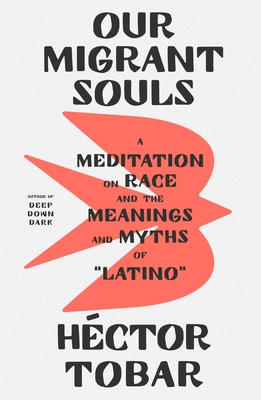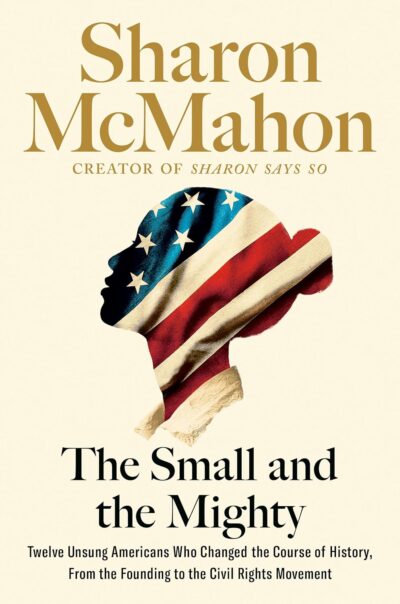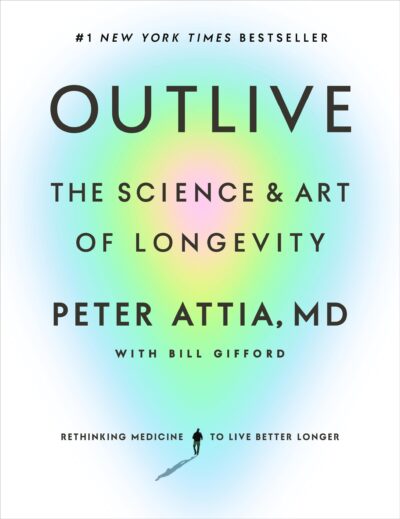435 Results with the "Biography" genre
Adventure Fiction (1159)
Business & Finance (1)
Children's Literature (124)
Comics (6)
Culture (51)
Drama (123)
Dystopian (23)
Fable (86)
Fantasy (1127)
Fantasy (203)
Fiction (1002)
Finance (1)
Gothic Fiction (12)
Historical Fiction (614)
History (122)
Horror (56)
Lifestyle (36)
Literary (404)
Literary Fiction (206)
Memoir (113)
Mystery (421)
Non-fiction (87)
Novel (549)
Paranormal Fiction (96)
Philosophical (180)
Philosophy (45)
Poetry (249)
Political Fiction (14)
Politics (42)
Practical (32)
Psychological (4)
Psychological Thriller (108)
Relationship (6)
Romance Novel (716)
Romantic Melodrama (14)
Satire (91)
Science (46)
Science Fiction (337)
Self-help (68)
Society (65)
Society (2)
Spiritual Growth (1)
story (2)
Thriller (699)
True Crime (56)
view (11)
Women's Fiction (1)
Young Adult (228)
-
Chapter
Chapter I — OPERATIONS OF 1807
 Chapter I begins the account of a remarkable feat of human endurance and ingenuity—the construction of a lighthouse on the treacherous Bell Rock. Each step forward was carved from a place of danger, where the sea ruled the hours and every decision depended on the shifting moods of weather and tide. Workers labored with discipline and care, knowing that even a moment’s delay could trap them on the rock as waves returned. The schedule was dictated not by the clock but by nature itself, requiring the team…
Chapter I begins the account of a remarkable feat of human endurance and ingenuity—the construction of a lighthouse on the treacherous Bell Rock. Each step forward was carved from a place of danger, where the sea ruled the hours and every decision depended on the shifting moods of weather and tide. Workers labored with discipline and care, knowing that even a moment’s delay could trap them on the rock as waves returned. The schedule was dictated not by the clock but by nature itself, requiring the team…-
41.1 K • Ongoing
-
-
 Chapter I opens with a thoughtful appraisal of fiction not merely as a genre, but as a living, evolving art form. The views of two distinguished voices—one known for structural precision, the other for accessible charm—serve as the starting point for a broader reflection on what fiction truly represents across all artistic disciplines. Rather than separating fiction from poetry or painting, it is suggested that storytelling forms the backbone of every great artistic expression, whether shaped in words…
Chapter I opens with a thoughtful appraisal of fiction not merely as a genre, but as a living, evolving art form. The views of two distinguished voices—one known for structural precision, the other for accessible charm—serve as the starting point for a broader reflection on what fiction truly represents across all artistic disciplines. Rather than separating fiction from poetry or painting, it is suggested that storytelling forms the backbone of every great artistic expression, whether shaped in words…-
77.9 K • Ongoing
-
-
 Chapter I - Memoir of Fleeming Jenkin begins with a detailed exploration of the Jenkin family’s rich historical roots in Kent, England, tracing their lineage back to the Tudor era. Their ancestry, extending through Welsh and Yorkshire branches, reveals a longstanding connection with civic responsibility and local leadership. William Jenkin, who served multiple times as Mayor of Folkestone, symbolizes the family’s influence, further demonstrated by their acquisition of Stowting Court—a manor that…
Chapter I - Memoir of Fleeming Jenkin begins with a detailed exploration of the Jenkin family’s rich historical roots in Kent, England, tracing their lineage back to the Tudor era. Their ancestry, extending through Welsh and Yorkshire branches, reveals a longstanding connection with civic responsibility and local leadership. William Jenkin, who served multiple times as Mayor of Folkestone, symbolizes the family’s influence, further demonstrated by their acquisition of Stowting Court—a manor that…-
75.5 K • Ongoing
-
-
 Chapter I - Memoir of Fleeming Jenkin opens a window into the years between 1858 and 1873, tracing Jenkin’s vivid correspondence during his telegraphic expeditions. His early letters to Miss Austin, and later to his wife, reflect more than technical achievements—they pulse with personal conviction and warmth. Even while battling sea-sickness and shouldering intense workloads, Jenkin conveys an undiminished enthusiasm for both his mission and the world around him. Each letter reveals a man alive to the…
Chapter I - Memoir of Fleeming Jenkin opens a window into the years between 1858 and 1873, tracing Jenkin’s vivid correspondence during his telegraphic expeditions. His early letters to Miss Austin, and later to his wife, reflect more than technical achievements—they pulse with personal conviction and warmth. Even while battling sea-sickness and shouldering intense workloads, Jenkin conveys an undiminished enthusiasm for both his mission and the world around him. Each letter reveals a man alive to the…-
75.5 K • Ongoing
-
-
Chapter
Chapter 9: Lies
 In Chapter 9, titled "Lies," the author examines the experience of being Latino in the United States, focusing on how mainstream narratives often depict Latinos as powerless or overly simplified figures. The chapter begins by critiquing a North American activist, whose portrayal of immigrants seeking refuge centers only on her actions, while neglecting the individual stories and unique identities of the immigrants involved. This portrayal ultimately reduces these individuals to mere symbols of victimhood,…
In Chapter 9, titled "Lies," the author examines the experience of being Latino in the United States, focusing on how mainstream narratives often depict Latinos as powerless or overly simplified figures. The chapter begins by critiquing a North American activist, whose portrayal of immigrants seeking refuge centers only on her actions, while neglecting the individual stories and unique identities of the immigrants involved. This portrayal ultimately reduces these individuals to mere symbols of victimhood,…-
56.1 K • Ongoing
-
-
 Chapter 9 explores the life of Inez Milholland, a powerful and compelling figure in the early 20th-century women’s suffrage movement. Inez’s beauty and intelligence allowed her to stand out in a time when women were often restricted to traditional domestic roles. She emerged as a key voice in the fight for women’s rights, advocating not only for suffrage but for broader societal changes, including civil rights and prison reform. Living in New York in 1910, Inez broke away from the societal…
Chapter 9 explores the life of Inez Milholland, a powerful and compelling figure in the early 20th-century women’s suffrage movement. Inez’s beauty and intelligence allowed her to stand out in a time when women were often restricted to traditional domestic roles. She emerged as a key voice in the fight for women’s rights, advocating not only for suffrage but for broader societal changes, including civil rights and prison reform. Living in New York in 1910, Inez broke away from the societal…-
123.9 K • Ongoing
-
-
Chapter
Chapter 9: Freedom Summer
 Chapter 9: Freedom Summer is a poignant reflection on the civil rights movement’s intensifying struggles and the volunteer efforts during the summer of 1964. In June, the Western College for Women in Oxford, Ohio, served as a gathering place for those eager to contribute to the cause. This initial assembly was marked by a diverse group of volunteers, mostly white and male, who came from across the nation. The training they underwent was intense, aiming to prepare them for the hostile environments they…
Chapter 9: Freedom Summer is a poignant reflection on the civil rights movement’s intensifying struggles and the volunteer efforts during the summer of 1964. In June, the Western College for Women in Oxford, Ohio, served as a gathering place for those eager to contribute to the cause. This initial assembly was marked by a diverse group of volunteers, mostly white and male, who came from across the nation. The training they underwent was intense, aiming to prepare them for the hostile environments they…-
121.5 K • Ongoing
-
-
 Chapter 8 of The Runaway Cell – New Ways to Address the Killer That Is Cancer begins with the remarkable case of James DeAngelo, a patient from the late 1960s who unexpectedly survived metastatic stomach cancer despite receiving no medical treatment. His survival puzzled doctors and led researcher Steve Rosenberg to explore the role of the immune system in combating cancer, a theory that was largely unproven at the time. Despite facing numerous setbacks and failures in his research, Rosenberg's…
Chapter 8 of The Runaway Cell – New Ways to Address the Killer That Is Cancer begins with the remarkable case of James DeAngelo, a patient from the late 1960s who unexpectedly survived metastatic stomach cancer despite receiving no medical treatment. His survival puzzled doctors and led researcher Steve Rosenberg to explore the role of the immune system in combating cancer, a theory that was largely unproven at the time. Despite facing numerous setbacks and failures in his research, Rosenberg's…-
87.7 K • Ongoing
-
-
Chapter
Chapter 8: One Man, One Vote
 Chapter 8: One Man, One Vote captures a deeply transformative and heartbreaking moment in the civil rights movement. In September 1963, the bombing of the Sixteenth Street Baptist Church in Birmingham, Alabama, resulted in the deaths of four young African American girls. This act of racial violence, which shocked the nation, served as a rallying cry for activists and marked a turning point in the struggle for justice. The brutal bombing was part of a broader campaign by white supremacists, designed to…
Chapter 8: One Man, One Vote captures a deeply transformative and heartbreaking moment in the civil rights movement. In September 1963, the bombing of the Sixteenth Street Baptist Church in Birmingham, Alabama, resulted in the deaths of four young African American girls. This act of racial violence, which shocked the nation, served as a rallying cry for activists and marked a turning point in the struggle for justice. The brutal bombing was part of a broader campaign by white supremacists, designed to…-
121.5 K • Ongoing
-
-
 Chapter 8 takes place during the 1890s, a decade marked by a severe economic crisis known as the Great Depression. This period of societal unrest led to a rise in nativist sentiments, and anti-immigrant attitudes surged, especially toward Asian immigrants. As the country struggled economically and politically, corruption in Washington reached a peak. In response, Grover Cleveland was reelected as president, vowing to eliminate corruption and restore integrity to the government. However, the political…
Chapter 8 takes place during the 1890s, a decade marked by a severe economic crisis known as the Great Depression. This period of societal unrest led to a rise in nativist sentiments, and anti-immigrant attitudes surged, especially toward Asian immigrants. As the country struggled economically and politically, corruption in Washington reached a peak. In response, Grover Cleveland was reelected as president, vowing to eliminate corruption and restore integrity to the government. However, the political…-
123.9 K • Ongoing
-
- Previous 1 … 23 24 25 … 44 Next
